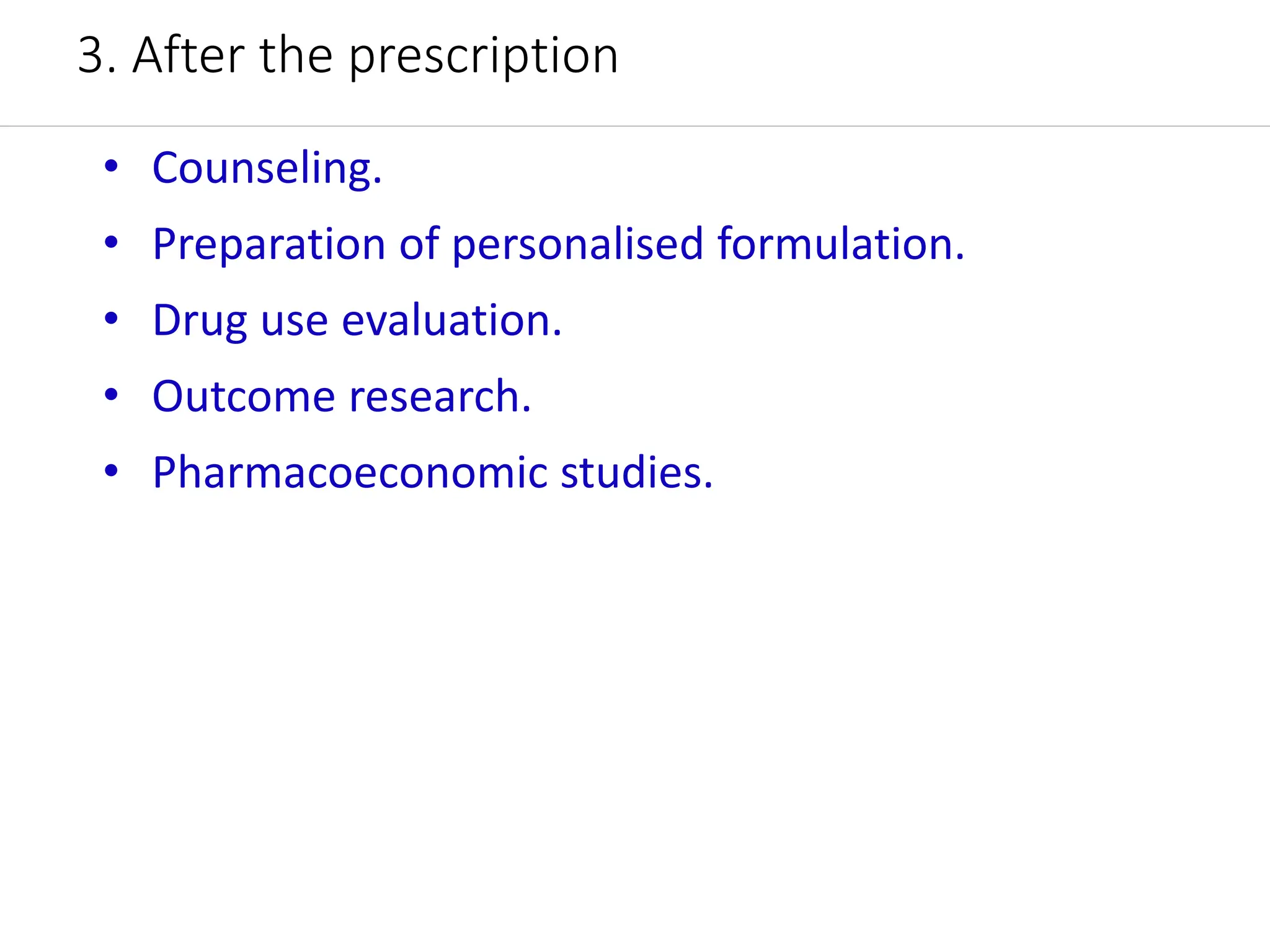The document discusses the evolution of the pharmacist's role from product-focused to patient-centered. It traces the shift from traditional compounding to a focus on clinical services, patient outcomes, and pharmaceutical care. The modern pharmacist promotes safe and effective medication use through activities like medication management, reviewing orders, educating patients, and monitoring treatment responses. The goals of pharmaceutical care are to ensure patients receive effective, safe, and economic drug therapy that improves quality of life by identifying and resolving drug-related issues.























































